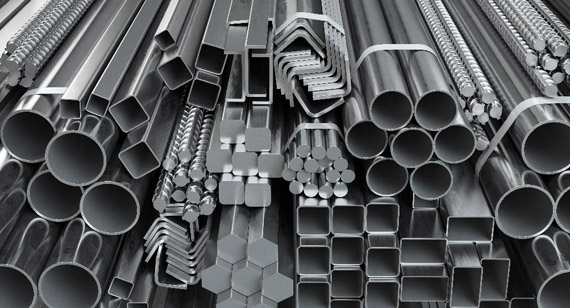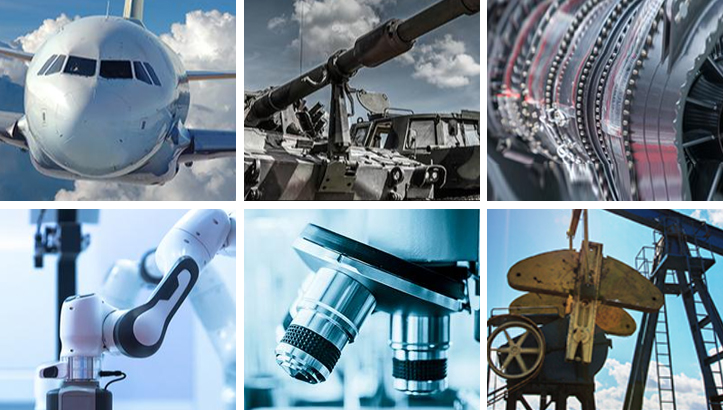15 years one-stop China custom CNC machining parts factory

Hey there I’m VMT Sam!
With 25 years of CNC machining experience we are committed to helping clients overcome 10000 complex part-processing challenges all to contribute to a better life through intelligent manufacturing. Contact us now
 113 |
Published by VMT at Jun 23 2024
113 |
Published by VMT at Jun 23 2024
In the field of CNC machined parts manufacturing, stainless steel is a crucial material widely used in various equipment and products. However, the question of whether stainless steel is magnetic often causes confusion and discussion. This article will explore the mysteries of stainless steel magnetism, answer readers' questions, and introduce the applications of non-magnetic stainless steel in various fields.
Whether stainless steel has magnetic properties mainly depends on its chemical composition and crystal structure. Generally, the higher the chromium content in stainless steel, the better its corrosion resistance, but this does not necessarily mean it is magnetic. The magnetism of stainless steel is primarily related to its ferritic and austenitic structures.

The magnetism of stainless steel originates from its internal ferritic structure. Ferrite is a compound of iron and other alloying elements that exhibits magnetic properties. When stainless steel contains sufficient ferrite, it will exhibit certain magnetic properties. Additionally, stainless steel may undergo changes in its internal structure due to mechanical stress or heat treatment during processing, which can affect its magnetism.
Ferritic Stainless Steel
Ferritic stainless steel mainly contains a ferrite structure, offering high strength and hardness but relatively poor corrosion resistance. Due to its high ferrite content, ferritic stainless steel typically has strong magnetic properties.
Martensitic Stainless Steel
Martensitic stainless steel is obtained through quenching and other heat treatment processes and has a martensitic structure. It features high hardness and strength but poor corrosion resistance. While martensitic stainless steel has a lower ferrite content, it still exhibits certain magnetic properties due to its unique crystal structure.
Austenitic Stainless Steel
Austenitic stainless steel mainly contains an austenite structure, providing excellent corrosion resistance, toughness, and plasticity. The ferrite content in austenitic stainless steel is very low, resulting in very weak or almost no magnetic properties. Common austenitic stainless steels include grades such as 304 and 316.
Due to its excellent corrosion resistance, toughness, and plasticity, non-magnetic stainless steel is widely used in many fields. For example, in the aerospace industry, non-magnetic stainless steel is favored for its high strength, lightweight properties, and excellent welding performance. In the medical device industry, it is used to manufacture surgical instruments, implants, and other products, reducing patient discomfort and adverse reactions. In the construction industry, non-magnetic stainless steel is often used to make decorative materials such as stainless steel pipes and towel racks.

The magnetism of stainless steel can significantly impact its application in certain scenarios. For instance, in electronic devices and precision instruments, avoiding magnetic interference is crucial to ensure proper operation. Therefore, using non-magnetic stainless steel in these fields is essential. Additionally, in the production of magnetic materials and magnetic research, precise control of stainless steel's magnetic properties is necessary.
Besides chemical composition and crystal structure, other factors such as heat treatment and cold deformation during processing can affect the magnetism of stainless steel. These factors may change the internal structure of the stainless steel, thereby influencing its magnetism. Therefore, it is essential to consider these factors during the processing and use of stainless steel.
To determine if stainless steel is magnetic, you can perform a simple test with a magnet. Place the magnet close to the stainless steel surface; if the magnet is attracted, the stainless steel has magnetic properties. If the magnet is not attracted or the attraction is very weak, the stainless steel is non-magnetic or has very weak magnetic properties. However, this method only provides a preliminary assessment and cannot definitively determine the magnetic properties of stainless steel.
Whether stainless steel has magnetic properties depends on its chemical composition and crystal structure. Ferritic and martensitic stainless steels typically exhibit magnetic properties, while austenitic stainless steel has weak or no magnetic properties. Non-magnetic stainless steel is widely used in aerospace, medical devices, construction, and other fields. Understanding the magnetic properties of stainless steel is crucial for selecting suitable materials, optimizing processing techniques, and improving product quality.
As experts in the CNC machined parts manufacturing field, we offer customized non-magnetic stainless steel CNC machined parts services. We have advanced CNC machining equipment and a professional technical team capable of producing high-quality, high-precision non-magnetic stainless steel parts according to customer requirements. Our service range includes CNC prototyping machining, custom CNC machining, and more, aiming to meet customers' personalized needs.

Our non-magnetic stainless steel CNC machined parts services offer the following advantages:
Can a magnet attract stainless steel?
Whether a magnet can attract stainless steel mainly depends on the type of stainless steel. Ferritic and martensitic stainless steels typically contain high ferrite content and can be attracted by magnets. In contrast, austenitic stainless steel, with its primary austenite structure and very low ferrite content, is usually not attracted by magnets.
Is 100% stainless steel magnetic?
The term "100% stainless steel" is not accurate because stainless steel is a general term for a series of alloys containing various compositions and structures. Some stainless steels, such as ferritic and martensitic stainless steels, have magnetic properties, while others, like austenitic stainless steel, do not. Therefore, it cannot be simply stated that "100% stainless steel" is magnetic or non-magnetic.
Which type of stainless steel is non-magnetic?
Generally, austenitic stainless steel is non-magnetic or has very weak magnetic properties. This is because the main components of austenitic stainless steel are chromium and nickel, which form an austenitic structure that results in very low ferrite content and resistance to magnetization. Common austenitic stainless steels include grades such as 304 and 316.
Ready To Start Your Next Project?
Get Instant Quote

Request a Free Quote
Send us a message if you have any questions or request a quote. We will get back to you ASAP!